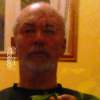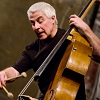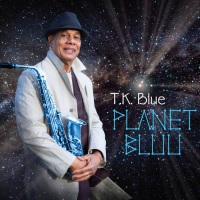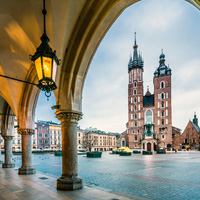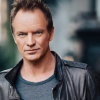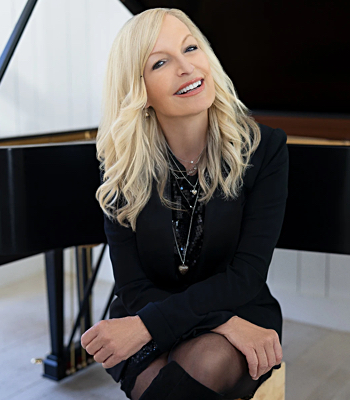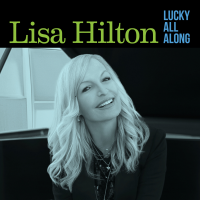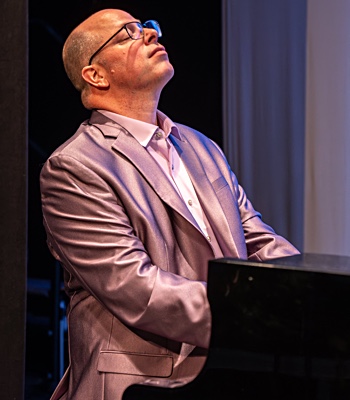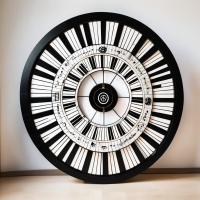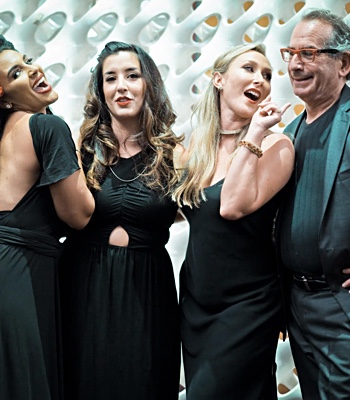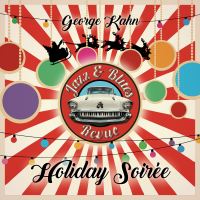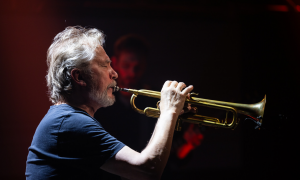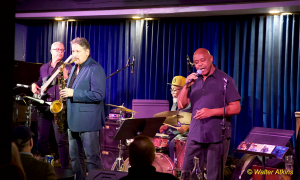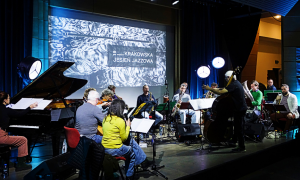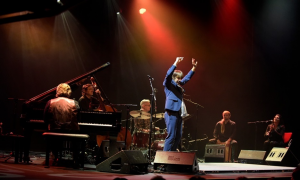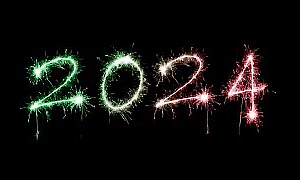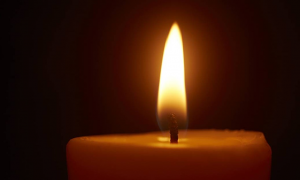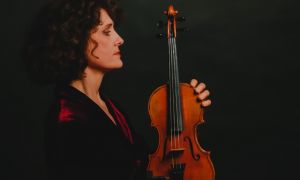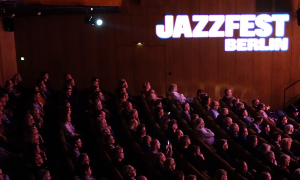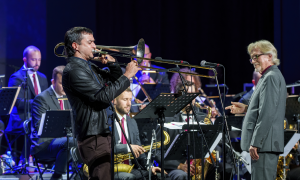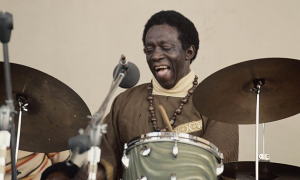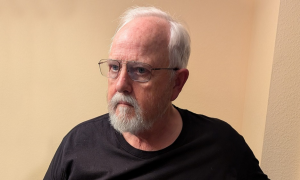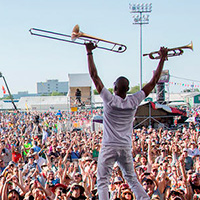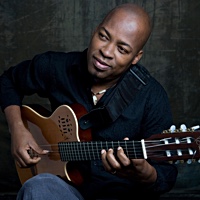Home » Jazz Articles » Live Review » Barry Guy's Blue Shroud Band Ten Year Anniversary
Barry Guy's Blue Shroud Band Ten Year Anniversary
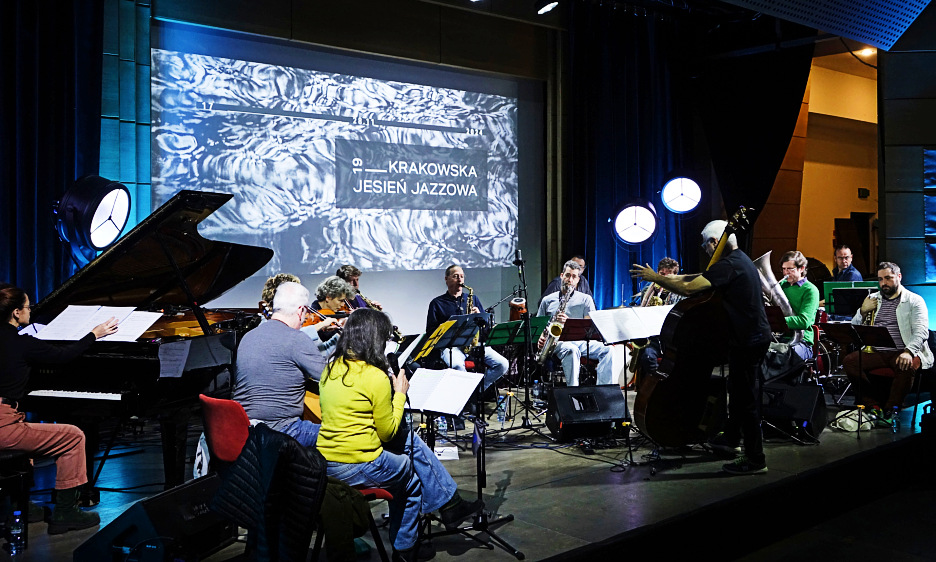
Courtesy John Sharpe
The barnstorming rendition of The Blue Shroud on the penultimate night garnered a prolonged standing ovation.
Krakow Jazz Autumn (Krakowska Jesien Jazzowa)
Klub Alchemia and Manggha Hall
Krakow
November 19-24, 2024
Intro
If bassist Barry Guy had only found fame as an improviser, his place in the pantheon would be assured. However a singular approach to his instrument and collaborations with the likes of Evan Parker, Cecil Taylor, Bill Dixon, Marilyn Crispell, Mats Gustafsson, Derek Bailey, and Howard Riley represent only one facet of his many talents. As an esteemed interpreter of Baroque classical and contemporary musics, as well as a storied large ensemble leader and formidable composer, he transcends genre.His first audacious foray into large scale arrangements at the age of 23 occasioned the founding of the London Jazz Composers Orchestra, which celebrated its 50th anniversary in 2020, followed later by the Barry Guy New Orchestra, and then in 2014 by The Blue Shroud Band (BSB), established to perform the titular work, but so successful that it generated a life of its own.
That Band, too, has reached a significant milestone, and as a happy consequence undertook a six day residency as part of the 19th annual Krakow Jazz Autumn, with the generous support of the Robert D. Bielecki Foundation. For the first four nights, assorted subsets of the 14 musicians performed in the basement of the legendary Alchemia club, located in Krakow's hip former Jewish ghetto Kazimierz, while rehearsing full ensemble pieces during the day. Then on the final two nights the band relocated just across the Vistula river to the acoustically superb hall of the Manggha Museum of and Technology to perform two of Guy's blockbuster works: "The Blue Shroud" and "All This This Here," twin peaks of the residency.
Such a sizeable grouping, hailing from nine countries, presents a mighty challenge, in terms of making the economics work as well as the organizational logistics. Consequently it performs relatively rarely, making each appearance a significant event. Perhaps in testament to members' desire to be part of such a pioneering venture as well as the unique allure of Guy's charts, there have been just three changes in personnel over the decade of the band's existence. The last being the introduction of Catalan pianist Jordina Millà, who shared the piano stool with her one time mentor, the outgoing Agusti Fernandez, for the duration of the residency.
"The Blue Shroud"
The barnstorming execution of "The Blue Shroud" on the penultimate night, its first airing since the London Jazz Festival five years previous, garnered a prolonged standing ovation. In some ways the composition can be seen as the Rosetta Stone to Guy's wide-ranging oeuvre. While much of his practice has looked to reconcile complex contemporary composition, thorny improv and adventurous jazz, here he takes that one step further by integrating baroque melody, along with resonant texts. With such a rich menu, there is danger of confusion and one flavor overwhelming the others. It is Guy's genius that he is able to marshal all those disparate components into a coherent whole without pastiche or dilution of their intrinsic qualities.In order to meet the technical demands, Guy needed to recruit a uniquely skilled crew. That he did, calling on leading early music interpreters who also loved to improvise, along with other open-minded stalwarts from more expected backgrounds.
Played against a backdrop of Pablo Picasso's masterpiece "Guernica," the piece was inspired not only by the painting and the infamous incident it reviled, but also by what happened when the United States propounded a false justification for war in 2003, at the United Nations in New York, based on Iraq's possession of what turned out to be non-existent Weapons of Mass Destruction. A tapestry of "Guernica" hung there too, but fearing it would draw attention to the likely outcome of US actions, it was obscured by a blue drape, the blue shroud of the title. Sadly with the relentless targeting of civilians in Israel, Gaza, Ukraine, Lebanon and elsewhere, its topicality remains undiminished.
British trumpeter Percy Pursglove broke the anticipatory hush with an ominous buzz, wafting through the air, hinting something wicked this way comes. It launched a vertiginous journey through forays into spiky improv, abrupt switchbacks, whipcrack orchestral interjections, intricate rhythmic figures, solo and small group outbursts, song and recitation. But all this vied with uplifting melodies, as Guy has co-opted some of the most beautiful tunes in the canon, utilizing fragments from Heinrich Ignaz Franz Biber's "Mystery Sonatas" and Johann Sebastian Bach's "Agnus Dei," to invoke the resilience of the human spirit and hope for redemption in the face of severe adversity. As a result, it was a 70-minute kaleidoscopic voyage to realms beyond exact meaning or easy explication.
Vocalist Savina Yannatou increased the emotional heft, not only delivering the specially written text by Irish poet Kerry Hardie, but also wordlessly vocalizing. She contrasted a more guttural staccato than most singers commonly cultivate, which in this context seems an anguished reminder of pain and suffering, with a soaring near operatic agility. Classical guitarist Benjamin Dwyer's Spanish stylings held a special relevance in this piece, but he also distinguished himself as a soloist, melding sudden swipes down the fretboard with piercing squeaks from rubbing his finger along the wood of the guitar in an arresting combination.
Within the framework, other notable interludes included a galumphing rampage by baritone saxophonist Julius Gabriel, stoked by Marc Unternährer's deep foundational tuba burbling and Lucas Niggli's blistering rat-a-tat. Then, two in quick succession as first Niggli initiated a jazzy groove, over which alto saxophonist Michael Niesemann's impassioned keening built up to a blowtorch frenzy, with lovely tumbling fills from Agusti Fernandez on piano, before the pianist took the spotlight himself in a spellbinding display pummeling the ivories as he cavorted up and down the keyboard.
A series of unison decrescendos, reducing in volume and number of players signaled that the end was near. Niesemann's alto and the strings rendered the sublime air of Bach's "Agnus Dei" before a finale of uneasy textures which sidestepped resolution. As always the overall impact was incredibly moving.
Small Formations
Four nights of small unit improvisation might be viewed as an hors d'oeuvre to the orchestral main course, but in actual fact the dizzying assortment of small plates constituted profoundly satisfying meals in themselves. While Guy naturally ensures the spotlight fixes on each of the participants at some point in the score, with such a large group that still only means one or two features from any given member. What the small formations do are provide copious chances to see each person playing in a range of surroundings and thereby exposing diverse aspects of their art, in succinct sets that necessitated reduction to the essentials, with no space for flab.Ten years since its inception, it seemed as if trust and confidence among the band had grown over time, such that even those who weren't household names or natural improvisers held their own with giants of the genre. It is no exaggeration to say that each one of the 27 pithy permutations programmed over the four nights contained something exceptional. Frustratingly, it would read like a shopping list to enumerate everything, so what necessarily follows are just a few selected summits from a veritable mountain range.
First Night
Suffice to say that anytime Guy appeared was likely to be a high point. The first sighting, his duties as informal MC apart, was one of the most volatile, in the company of Fernández and Torben Snekkestad, an established unit which already has two albums to its credit. Here, amid the blizzard of sudden sounds, Guy gave full rein to his bass instincts, shifting mode abruptly in hyper-reactiive consort with his partners, from abrasive swipes to the thinnest arco peeps to luscious slurred resonance. His speed of reaction remained undimmed by his 77-years in a set in which the listening was palpable.All three make light of their instrument's supposed limitations in pursuit of the most apt rejoinder. Fernandez's facility on the keys comes seasoned with notes dampened or plucked from the innards and avalanches of clanking preparations. Similarly exploratory and quick-witted, Snekkestad alternated between reed trumpet and soprano saxophone, metallic shrieks giving way to gurgling overtones, then—at the very end—to strident blurts as he played both at the same time to conclude a set of fast moving sonic collisions.
Violinist Maya Homburger, a leading exponent of the baroque violin, usually eschewed free improvisation in favor of husband Guy's written pieces. This time she tackled an old favorite, "Celebration," in another wonderful duet, this time with Swiss tubaist Unternährer. While Homburger addressed the melody line, the tuba snorted and snuffled like a pig hunting for truffles, occasionally evoking elements of the composition or inventing an intermittent counterpoint. The beauty came from the ensuing ebb and flow of dissonance.
The saxophone quartet has been one of the recurring gambits in Guy's reckoning for the BSB, and with such a formidable roster, who can blame him. While sometimes functioning as an analogue of the string quartet, without script the foursome morph into a jostling many-headed hydra, with Per Texas Johansson's tenor flanked by Gabriel's baritone, Niesemann's alto and Snekkestad's soprano. While some sequences could masquerade as chamber composition, in others full-on bickering suggested simultaneous soloing, like the World Saxophone Quartet in some of its more unbuttoned moments. But exemplifying the seemingly innate cohesion, they concluded their set—and the first evening—with a deliberate string of unison notes separated by silence.
Second Night
Yannatou was hitched with violist Fanny Paccoud, a principle soloist in John Eliot Gardiner's various early music ensembles, and drummer Ramon Lopez in a trio beyond category. A mournful fado style vocal and plucked viola initially placed the combo in the chamber, but when the attentive Lopez finally chose to join he took it rather more towards the garage. In what seemed an outpouring of raw feeling, Yannatou screamed, only for the intensity to rocket as Paccoud responded likewise, all the while bowing fiercely. Lopez raised the stakes yet higher with an accompanying tabla flurry to cap an unexpectedly magical moment, in a terrific opening set.Niesemann took to the stage in one of the more rambunctious outfits, in a line up which he had requested, which took the format of a classic jazz quintet. Alongside him were trumpeter Pursglove filling out the front line and the rhythm section of Fernández, Guy and López. But needless to say they presented as something very different. Guy tiptoed around the saxophonist's low growl to begin a gradually ramping up exchange. But it wasn't until Pursglove joined that it really took flight. Always a considered presence, he intoned an incantatory motif around which everyone rallied, until perhaps they weren't that far from a cooking hard bop unit after all, albeit with a throbbing momentum rather than a finger clicking groove.
Guy exhibited another side of his artistry in a trio with Homburger and Niggli, that gave a stirring performance of the bassist's "Andeutende Dynamik" from their album Acanthis (Maya Recordings, 2022). A through-composed score, it juxtaposes notated and graphic segments, resulting in an enthralling mix of the precise and intuitive, sometimes dashing and sprightly, other times spiced by wayward flourishes and unexpected attacks, as when Niggli unleashed lengths of bright red plastic tubing on his drums.
Without drums, the foursome of guitarist Dwyer, Pursglove, Paccoud and Unternährer were free to explore the quieter reaches in an interchange of bent twangs, squeals, sibilance and tapped wood. While restrained, there was no lack of fervor in the scuttles along the fretboard or the filigree viola tracery. Pursglove toggled between incisive blatts and sustained whistles, before turning melodic over a quiet but restive backdrop, anchored by the raucous tuba. It was one of those instances when every contribution seemed just right.
With Millà having already recorded with Guy (Live In Munich (ECM, 2024)), it was a no-brainer to revisit the lineup, here in the company of Niggli. Millà treated her whole instrument as a potential sound source, so while they began not too far from a conventional piano trio, that was never going to last long as a sudden outbreak of rasping scrapes signaled. Guy threaded a metal rod between his strings while sawing below, Niggli wielded his mallets in crisp bursts, while Millà spent more time inside the frame than on the keys.
But while everyone reveled in so-called extended techniques, they also enjoyed purer pleasures. A measured episode of bent notes and delectable swelled bass slurs drew in Millà with a hushed refrain. But evidencing the unpredictability inherent in the threesome, shortly later she was engaged in an electrifying standoff with Niggli, exuberant drum crashes answered by stabs, forearm and flat palm clusters hammered from the keyboard, both standing inclined towards each other from opposite sides of the stage in ferocious concentration. A terrific way to finish.
Third Night
Guy's enduring fascination with the work of Nobel winning playwright Samuel Beckett surfaced in the duo "Mirlitonnades," presaging the final evening's concert. Here the bassist not only accompanied Homburger instrumentally, but theatrically exclaimed the author's fragmentary texts at the same time. Guy was in playful vein too in another duet, this time with Yannatou. Transfixed by her vivid declamations as if she were having a raging argument in an alien language, his playing, posture and facial expressions sometimes reinforced the mood, but at other times belied it in a supremely sympathetic pairing.Unternährer's brass behemoth returned in a further captivating duet, this time with Johansson on tenor saxophone. This began as one of the jazziest sets of the four days, as dirge-like tenor and chortling tuba entwined in simpatico invention. Gradually they navigated away from the mother lode, although sporadic lyrical phrases revealed they always knew the way back, culminating in a passage where Johansson vocalized a song under his breath as his fingers pattered on the keys and Unternährer whispered a breezy rejoinder.
Niesmann waxed incandescent once more in free jazz tandem with Niggli. His emotion-laden vibrato heavy alto cry matched by the drummer's metal-on-skins and bass drum tattoo. Precise and responsive, Niggli varied his textures using hands, wires, bean pods, mallets, offering both contrast and complement as the German vaulted the stave in woozy bleats and yelps.
More energetic still was the pairing between the drummer and Gabriel's crusty baritone. Keypad plosives and finger popping drums launched one of the more fiery double acts. A former pupil of Niesemann at the Essen Folkwang University, Gabriel has developed into one of the most thrilling weapons in the Blue Shroud arsenal, capable not only of gruff throaty cries studded with overblown screeches, but also the circular breathed rumble with rhythmic kernels reflected by Niggli's bowed cymbal and kick drum punctuations. Their set was concentrated and visceral, short and nasty if you will.
Fourth Night
Gabriel also featured heavily in a quintet in the final night at Alchemia. After the succession of compressed sets, it was good to be reminded of the delights of an extended blow. The occasion was billed as the launch for In The Light Of The Current Myth (FSR, 2024) by a group convened by the saxophonist which also included Yannatou, Fernández, Guy and López. In a freewheeling excursion, they covered a huge dynamic range, from fire music excess to tender communion to hymnal ascent.Gabriel seemed to live each note, stretching up onto his toes, arching his back, as his baritone stormed through the set. Even at the quieter junctures, he was a magnetic presence. He contributed a percolating hum behind Yannatou's inflamed wordless narrative, buttressed by Guy's matching dark underpinning, then gave wings to the vocalist's lachrymose cry atop a piano-drum lament. Inevitably calm could not last. Fernández' dive under the bonnet supercharged a sparse dialogue between bass and piano into a noise crescendo, symbolic of the mercurial talents let loose.
One of only two solo sets, Snekkestad took to the bandstand alone with his reed trumpet to open proceedings. The addition of a custom-made woodwind mouthpiece to a regular trumpet transforms the instrument into something neither one or the other. But Snekkestad's exhaustive study of the potential reaped breathtaking reward, in a set elevated by attention to form and avoidance of the temptation to do everything.
It began with a controlled growl in the bass register, bubbling as if underwater, which periodically shaded up into the highest frayed tone, only to drop back down again. Extrapolation into a dark lyricism never quite escaped the return to the bass motif, until Snekkestad added further light and shade by striking metal bowls towards the conclusion, where he finished blowing high and thin with just his mouthpiece.
All This This Here
For the final night of the residency, Guy presented his third major work for the BSB "All This This Here," a piece premiered in Krakow three years before, and subsequently recorded in 2023 (Sluchaj). It provides a musical setting for Beckett's last work, the 1988 poem "What is the Word" ("Comment Dire"). However before that, in a brilliant piece of programming, Amsterdam's ADAM String Quartet gave a magnificent account of Guy's composition "What Is The Word" which veered between extreme delicacy and a frantic maelstrom.Commissioned by the Kronos Quartet, the piece was triggered by the same poem as the later orchestral work, where some of the same musical material reappears, meaning there was a pleasing scene setting dimension to the recital. That was compounded by the ADAM's decision to not only read the text of the poem during their version—something which Guy hadn't originally envisaged—but also include a brief rendition of the British Baroque composer Pelham Humfrey's "O Lord My God," which Guy also referenced in the larger work. In a further demonstration of their versatility they rounded off their leg of the evening with a contemplative exposition of Haydn's "The Seven Last Words Of Our Saviour On The Cross."
After a short interval the BSB mounted the stage. If "The Blue Shroud" was concerned with the external world, the horror of war and the resilience of the human spirit, then "All This This Here" focuses much more on the internal world, where uncertainty, loss of language and time passing mingle in an undefined existential angst. Apart from the Beckett, Guy also incorporates two 18th century Japanese haikus, a poem by Irish writer Barra O'Seaghdha and another by Beckett, all similarly dealing with "life in transit." And just as the words derive from a rich variety of traditions, so does the music.
Beckett's words bookend the hour-plus work, spoken in the original French the first time by the Yannatou, but sung in English at the end, over floating tonalities which echoed the halting, circling-back-on-itself nature of the text. But thereafter, she extemporized harsh nonverbal syllables as excerpts of Humfrey's courtly music appeared, only to gradually loosen their moorings as they dissolved into flinty improv. That appealing dichotomy between forthright grandeur and untethered exchanges arose repeatedly throughout, enhanced by a fast mutating energy shared with "The Blue Shroud."
Furthermore, Guy ensured each section furnished opportunities for individual expression, which arose organically from the performance. Indeed the very first notes were a astonishingly skittering duet between Paccoud and Niggli. Other special moments included Pursglove's liquid flugelhorn torrent, a passage of tumultuous piano thunder from Millà, and later Homburger's virtuoso acrobatic violin, meshed with guitar and percussion in a vortex of fugue-like abstraction.
As if to offset the sometimes daring fragility, and perhaps intended to recall the bustle of former times from the perspective of later life, Guy has inserted a pair of foot tapping jazzy stomps fuelled by the twin drummers, which served as splendid vehicles for the four saxophonists. Even here, the bottom dropped out to leave the reed men in delicious freefall, before triumphantly renewing the exhilarating sprint. Each of the reed men was mesmerizing, with Johansson's muscular Trane-like mantra especially exciting, as was the subsequent transition to Snekkestad's mewling soprano skirl.
That unanticipated suspension was emblematic of the tremendous wealth of detail Guy has achieved, through voicings both dramatic and nuanced. At the end, Yannatou's unaccompanied voice took on a particular vulnerability as she slowly swept her arm in a semicircle, taking in her fellow musicians, intoning the title and adding another layer of meaning to "all this this here." Cue another protracted ovation!
Outro
Guy showed no signs of slowing down. Already he is working on another major work for the BSB, likely for premiere at a further gathering, in Dublin in April 2025. Keep your eyes peeled for an unmissable experience.Tags
Comments
PREVIOUS / NEXT
Support All About Jazz
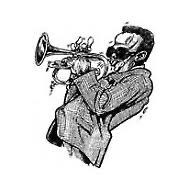 All About Jazz has been a pillar of jazz since 1995, championing it as an art form and, more importantly, supporting the musicians who make it. Our enduring commitment has made "AAJ" one of the most culturally important websites of its kind, read by hundreds of thousands of fans, musicians and industry figures every month.
All About Jazz has been a pillar of jazz since 1995, championing it as an art form and, more importantly, supporting the musicians who make it. Our enduring commitment has made "AAJ" one of the most culturally important websites of its kind, read by hundreds of thousands of fans, musicians and industry figures every month.

